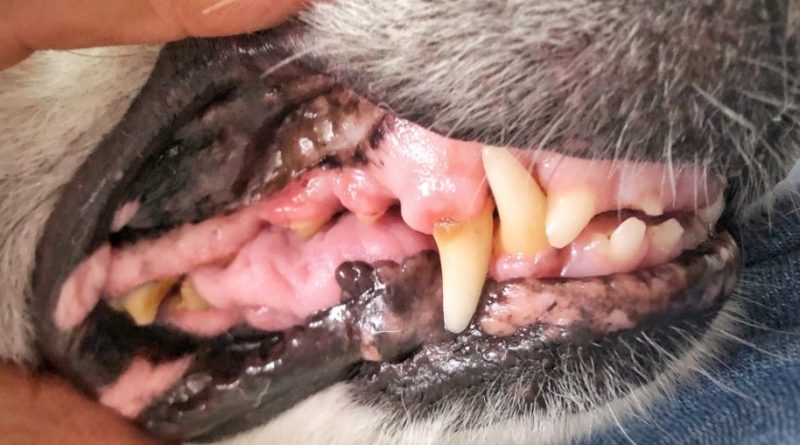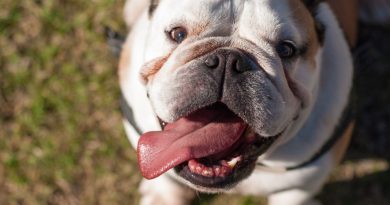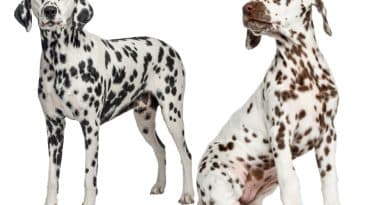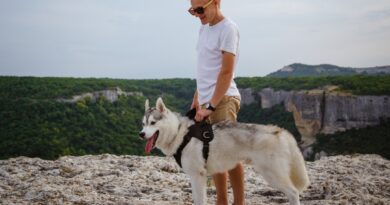What to do when your dog’s tooth falls out
Various reasons may be related to a dog’s teeth falling out. Depending on the age, this can be considered normal or indicative of a problem. In this article, you will find the main causes of a dog’s tooth falling out. Always remember to consult a veterinarian!
Tooth replacement
Just like humans, dogs also go through life stages and change teeth during their childhood. This process, in which deciduous teeth (also known as baby teeth) fall out and permanent teeth grow in, can vary depending on the size of the pet.
Small dogs usually tend to lose their teeth later than large dogs. In general, there is no need to worry because this dog tooth replacement is natural and occurs between the fourth and seventh months of life.
During this period, it is normal for the dog to feel some discomfort and chew on everything. Therefore, it is essential to buy toys, chew toys, and start brushing their teeth. This way, the pet adapts to cleaning, making it easier in adulthood and avoiding various dental problems.
Senior dogs
Although it is common to see a dog’s tooth falling out in old age, this is not normal. In this case, tooth loss can occur due to a lack of oral health care throughout the animal’s life, such as brushing, cleaning with a dog dentist, proper nutrition, etc.
Often, the extraction of some teeth in older dogs is also necessary due to low immunity, which can cause inflammation of the teeth, hindering the well-being and even the feeding of the animal.
Causes of a dog’s tooth falling out
Several factors can influence the falling out of a dog’s teeth. The main ones are related to the oral health of animals, which, when not done correctly, can lead to various problems, including tooth loss.
If you are wondering “why is my dog’s tooth falling out?” know that the main causes of this problem are related to tartar, gingivitis, and periodontitis, due to a lack of dental care.
When proper oral hygiene is not performed, organic residues accumulate and serve as food for bacteria that already naturally live in the pets’ mouths. They reproduce rapidly, leading to the accumulation of microorganisms.
Canine tartar appears as yellowish spots and, sometimes, darker ones on the top of the teeth. It is a consequence of not removing dental plaque, which, when organized, calcifies and causes an inflammatory process in the tooth and its entire support.
The lack of care for the dog leads to tooth loss. The accumulation of dental plaque is common and almost unavoidable in most cases. However, the occurrence is enhanced when there is no oral hygiene and an unhealthy diet, with the ingestion of meats, sweets, fruits, and foods that do not generate friction.
Other oral health problems
Gingivitis is an inflammation of the oral mucosa, caused mainly by the accumulation of bacterial plaques. It mainly occurs in the gums but can cause lesions on the tongue and oropharyngeal area, as well as tooth loss, bad breath, and problems eating and drinking.
Periodontitis is a clinical condition that includes various infections that affect the gums and the bone structure that supports the dogs’ teeth. The main symptoms are bad breath, tartar, and abscesses in the mouth, which can lead to tooth loss.
If not treated, bacteria can also enter the bloodstream and affect vital organs, such as the heart, liver, kidneys, etc. Therefore, it is important to pay attention to symptoms such as loss of appetite, excessive bad breath, a permanent desire to scratch the mouth, abscesses, and secretions.
How to treat and prevent tooth loss
Now you know what might be happening when you see your dog’s tooth falling out. Although some problems related to the oral health of dogs are quite common, they can be prevented and treated when discovered early.
Maintain good oral hygiene for your pet to prevent the main problems mentioned in this article, including tooth loss. Brushing is the starting point for this prevention. When included from a young age, it facilitates the adaptation process.
It is ideal to brush the animals’ teeth at least three times a week, using a brush specifically for dogs. They are the most recommended as they have soft bristles and an angle that facilitates cleaning all teeth.
The use of toothpaste may be optional since water and a brush do a good job. To make the process more enjoyable, there are dog-specific toothpaste without fluoride and foam, which come with meat and chicken flavors.
Toys, chew toys, and treats specifically for dental treatment are also excellent options for maintaining the pet’s health. In addition to brushing, it is essential to take the animal to the veterinarian at least twice a year or whenever you notice unusual changes in the animal’s behavior.
Only a qualified professional can identify possible problems with the animal’s health. When detected early, these issues can be resolved with appropriate treatments, including medications, changing the diet, and constant brushing.
If you liked the article “What to do when your dog’s tooth falls out,” share it with your friends and family so everyone knows what to do. Take advantage of the tip for your pet and take good care of it!




